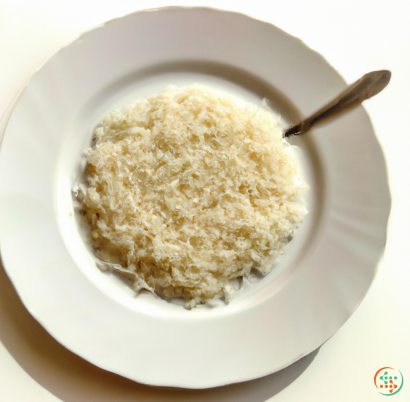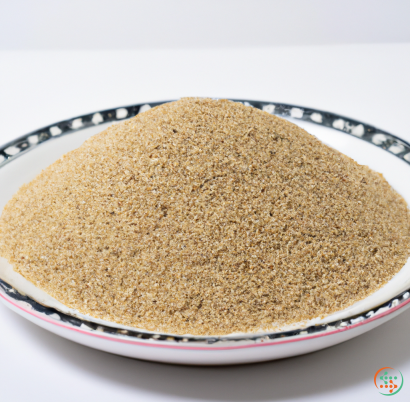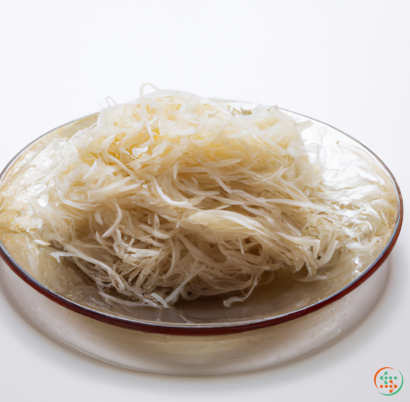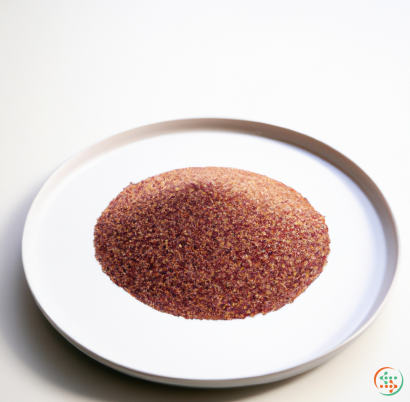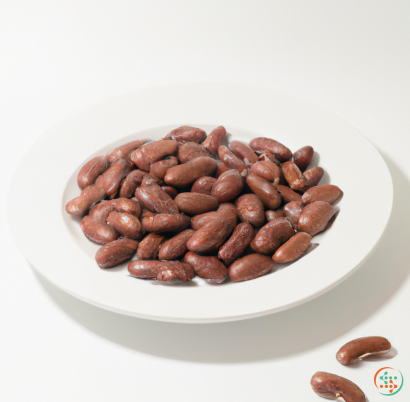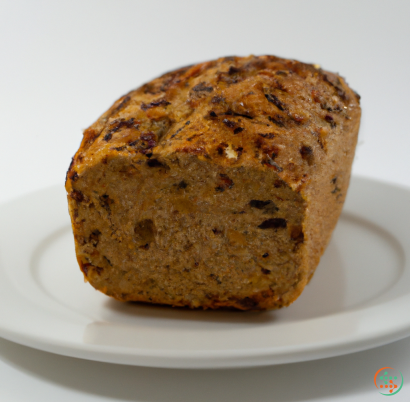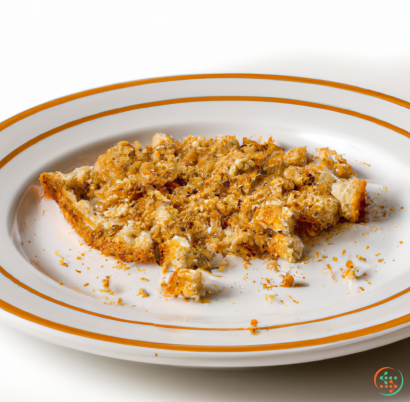Wheat Flour
Wheat flour is the main ingredient in almost every bakery in the world, used to make bread, cakes, pastries and a variety of other baked goods. It’s made from Wheat, a cereal grain grown in temperate climates, originally cultivated in the Fertile Crescent. The Wheat flour itself is a combination of the Wheat’s embryo and endosperm, two of its three main components. The flour is not only used for baking but for thickening sauces and gravies, or as a coating for fried foods.
The Wheat plant has an ancient history. The Fertile Crescent is an area in the Middle East known for its early agriculture and where Wheat has been harvested since as early as 8800 BCE. Later, settlers in what is now the United States planted Wheat in the fields of Massachusetts and Virginia in the 1600s. Since that time, Wheat has been a major crop in the world.
Wheat flour is the most widely used of the six categories of flours. The other flours are cake, pastry, all-purpose, rye, and whole wheat. The various types of Wheat flour are designated by the amount of gluten, or protein, they contain; the greater the gluten content, the less refined the flour is.
All-purpose flour is the most popular form of Wheat flour used in baking. It’s milled from the endosperm of the Wheat, and though it is mixed with some Wheat germ and bran, it generally has lower gluten content than other flours. It’s known for its versatility, used in anything from cakes to biscuits to piecrusts. Bread flour is the most common Wheat flour available in the market, usually having more gluten than all-purpose flour. It is used in making yeast based recipes, such as bread, bagels, and pizza dough.
When baking with Wheat flour, it is important to understand how yeast and baking powder interact with it. Yeast, a live fungus, increases in size while it’s exposed to air and water. The air and water in the flour activate the yeast and cause the dough to rise. Baking powder is a leavening agent that reacts with moisture and heat and produces gas that makes the dough rise. For these reasons, it’s generally recommended to use non-leavened Wheat flour for things such as cookies and pies, and use leavened Wheat flour for baked goods such as breads and pastries.
In addition to providing the basic structure for many baked goods, Wheat flour is an excellent source of essential nutrients. It is fortified with vitamins and minerals, such as B vitamins, iron, magnesium and zinc. Whole Wheat flour contains many B vitamins and zinc, while enriched flour has added folic acid, iron, thiamin, riboflavin, niacin and vitamin B6.
Wheat flour is one of the main ingredients used to make baked goods, sauces and fried foods. It has a long, abundant history and is made from the endosperm of Wheat. There are six general types of Wheat flour available, all-purpose and bread flour being the most popular. When baking with Wheat, it is essential to use the correct type and ingredients in order to ensure proper rising and flavor. Nutrient wise, Wheat flour is a good source of essential vitamins, minerals and proteins.
The Journey from Wheat Field to Dinner Plate: How Wheat Flour is Created
Wheat is one of the most commonly consumed grains in the world today. It is used to make a variety of food products, including flour, which makes up the basis of many types of bread, pastries, cereals, pizzas and other goods. Wheat flour is the main ingredient in the creation of these goods, and the process of getting that wheat flour from the field to your dinner plate may involve several steps.
Let’s dive into how wheat flour is created and how it travels from a wheat field to the dinner plate.
Harvesting and Processing
The process of getting wheat flour from the field to the dinner plate starts with the harvesting of wheat in the field. This is when the crop is cut, bundled and stacked in the field and then loaded on a truck where it is transported to the wheat mill.
At the wheat mill, the wheat is weighed and stored in large containers. It is then cleaned of any foreign particles and de-stoned. The wheat is then divided into three components: bran, germ and endosperm. The bran consists of the outer husk of the wheat berry, the germ is the inner part of the wheat berry and the endosperm is the starchy part of the wheat berry that contains the protein and carbohydrates.
Next, the wheat is sifted to remove the bran, germ and endosperm from the wheat kernels. The clean wheat kernels are then sent through a machine that cracks and grinds the kernels into finely ground pieces. This process is called milling, and it yields the basic form of wheat flour.
At this stage, the wheat flour is subject to inspections for quality and safety, and depending on the type of flour the customer requests, more milling could be conducted to yield finer forms of wheat flour. The newly milled wheat flour is then often mixed with water and other ingredients to create flours of different flavors, textures and nutritional content.
Packaging and Distribution
The next stage of the wheat-flour-from-field-to-dinner-plate process involves packaging and distribution. The milled wheat flour is measured into specific bags or containers and is labeled with instructions and nutrition facts. These bags or containers are then packed onto pallets and shipped out of the mill via trucks or trains to their final destinations.
Once the flour reaches its destination, it is stored in a warehouse until it is needed. The most common destinations for wheat flour are bakeries, hotels, restaurants and stores.
Baking and Preparation
For consumers and professionals who prefer to make homemade products, wheat flour is an essential ingredient and needs to be ready for use. Bakers use wheat flour as the primary ingredient in breads, cakes, muffins, cookies, pastries and other baked goods. Wheat flour is combined with other ingredients such as water, yeast, salt and sugar to create the dough or batter. This dough or batter is then formed, baked and transported to the store or supermarket.
For those who would rather leave the baking to the professionals, there are many pre-baked products that are made with wheat flour ready for consumption. Pizza, for example, is typically made with a wheat-flour-based dough and is available from most grocery stores, pizza chains and restaurants.
Finally, wheat flour can also be used in the preparation of cooked meals such as casseroles, soups and sauces.
Eating and Enjoyment
Ultimately, the journey of wheat flour from field to dinner plate ends with the enjoyment of a delicious homemade baked good, a pizza from your favorite pizzeria or a savory meal at home with family and friends. Each of these meals began with the simple wheat berry in the field, but the journey is certainly much longer, more involved, and significantly more enjoyable.
Wheat flour is an incredibly versatile and important ingredient that is used in a variety of products all around the world. Its journey from the field to the dinner plate is a testament to the dedication and effort put in by farmers, millers and others in the wheat flour industry. And while the process of getting wheat flour from the field to the dinner plate is complex, it’s an integral part of bringing delicious wholesome foods to our plates, day after day.
| Vitamin E | 0.06 mg | |
| Vitamin K | 0.3 ug | |
| Vitamin B1 | 0.12 mg | |
| Vitamin B2 | 0.04 mg | |
| Vitamin B3 | 0.00125 grams | |
| Vitamin B4 | 0.0104 grams | |
| Vitamin B5 | 0.44 mg | |
| Vitamin B6 | 0.04 mg | |
| Vitamin B9 | 0.026 mg |
| Calcium | 0.015 grams |
Daily Value 1.3 g
|
| Iron | 0.00117 grams |
Daily Value 0.018 g
|
| Magnesium | 0.022 grams |
Daily Value 0.4 g
|
| Phosphorus | 0.108 grams |
Daily Value 1.25 g
|
| Potassium | 0.107 grams |
Daily Value 4.7 g
|
| Sodium | 0.002 grams |
Daily Value 2.3 g
|
| Zinc | 0.7 mg |
Daily Value 0.011 g
|
| Copper | 0.14 mg |
Daily Value 0.9 mg
|
| Manganese | 0.68 mg |
Daily Value 0.0023 g
|
| Selenium | 0.0339 mg |
Daily Value 0.055 mg
|
| Tryptophan | 0.127 grams | |
| Threonine | 0.281 grams | |
| Isoleucine | 0.357 grams | |
| Leucine | 0.71 grams | |
| Lysine | 0.228 grams | |
| Methionine | 0.183 grams | |
| Cystine | 0.219 grams | |
| Phenylalanine | 0.52 grams | |
| Tyrosine | 0.312 grams | |
| Valine | 0.415 grams | |
| Arginine | 0.417 grams | |
| Histidine | 0.23 grams | |
| Alanine | 0.332 grams | |
| Aspartic Acid | 0.435 grams | |
| Glutamic Acid | 3.479 grams | |
| Glycine | 0.371 grams | |
| Proline | 1.198 grams | |
| Serine | 0.516 grams |
| Total Sugars | 0.3 grams |
per 100g
|
| Palmitic acid (16:0) | 0.15 grams |
|
| Stearic acid (18:0) | 0.01 grams |
|
| Total Saturated fatty acids: | 0.16 g | |
| Oleic acid (18:1) | 0.09 grams |
|
| Total Monounsaturated fatty acids: | 0.09 g | |
| Linolenic acid (18:3) | 0.02 grams |
|
| Linoleic acid (18:2) | 0.39 grams |
|
| Total Polyunsaturated fatty acids: | 0.41 g | |

